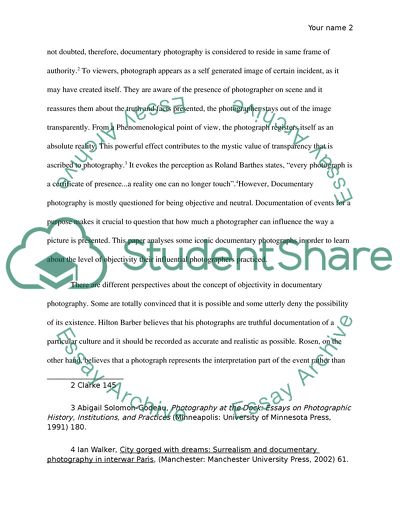Cite this document
(Can Documentary Photography Be Objective Essay Example | Topics and Well Written Essays - 5000 words, n.d.)
Can Documentary Photography Be Objective Essay Example | Topics and Well Written Essays - 5000 words. Retrieved from https://studentshare.org/social-science/1734548-can-documentary-photography-be-objective
Can Documentary Photography Be Objective Essay Example | Topics and Well Written Essays - 5000 words. Retrieved from https://studentshare.org/social-science/1734548-can-documentary-photography-be-objective
(Can Documentary Photography Be Objective Essay Example | Topics and Well Written Essays - 5000 Words)
Can Documentary Photography Be Objective Essay Example | Topics and Well Written Essays - 5000 Words. https://studentshare.org/social-science/1734548-can-documentary-photography-be-objective.
Can Documentary Photography Be Objective Essay Example | Topics and Well Written Essays - 5000 Words. https://studentshare.org/social-science/1734548-can-documentary-photography-be-objective.
“Can Documentary Photography Be Objective Essay Example | Topics and Well Written Essays - 5000 Words”, n.d. https://studentshare.org/social-science/1734548-can-documentary-photography-be-objective.


